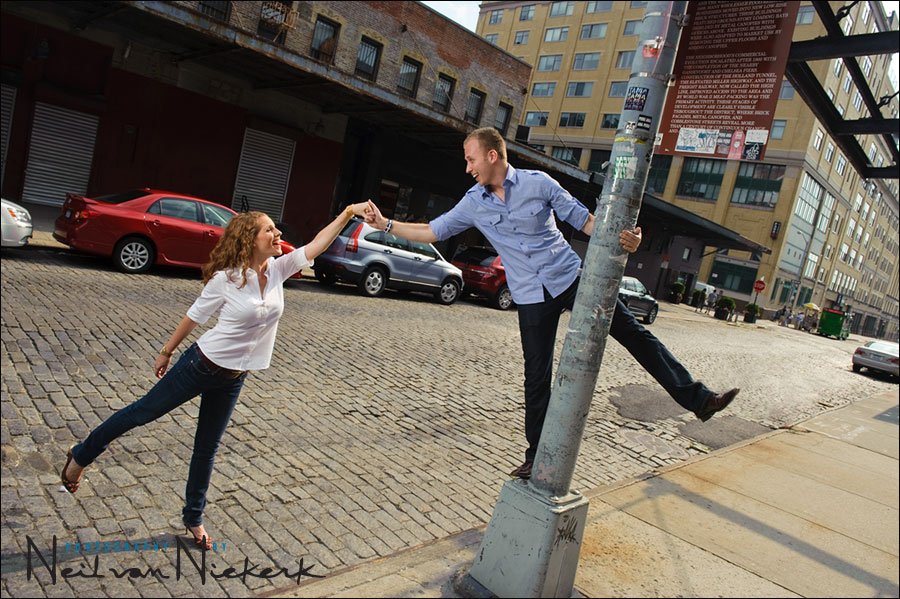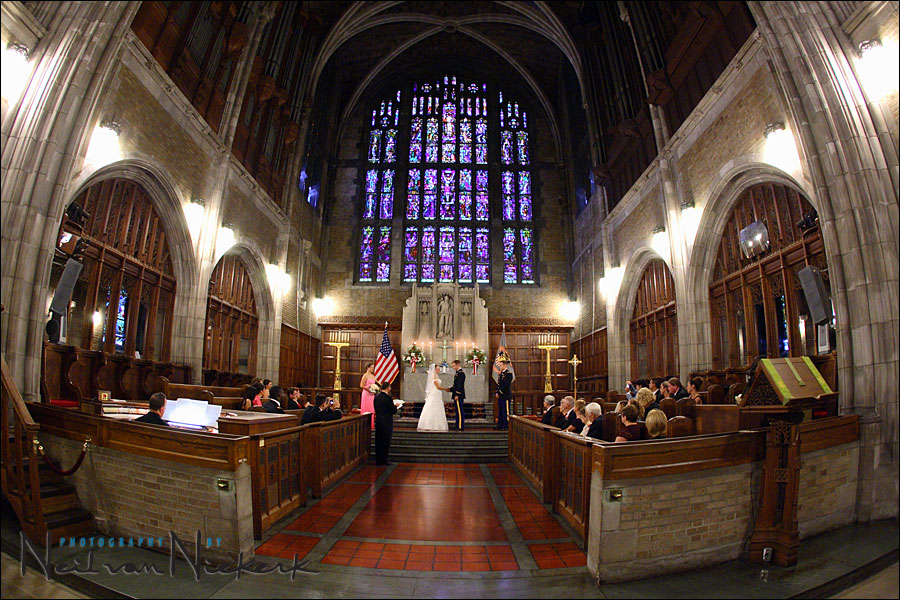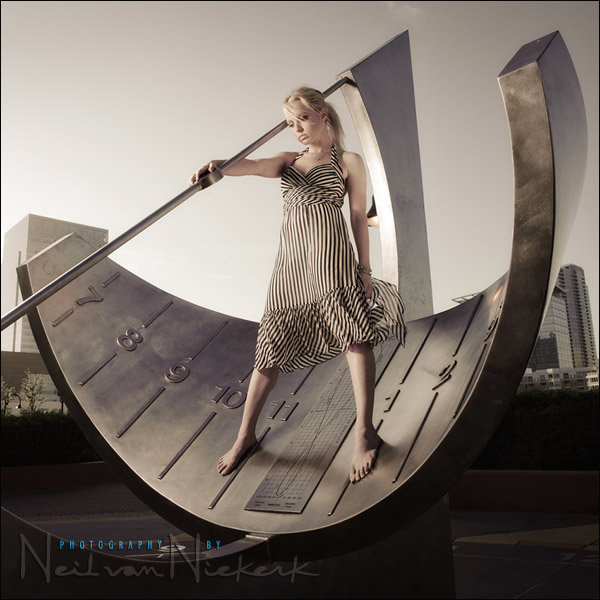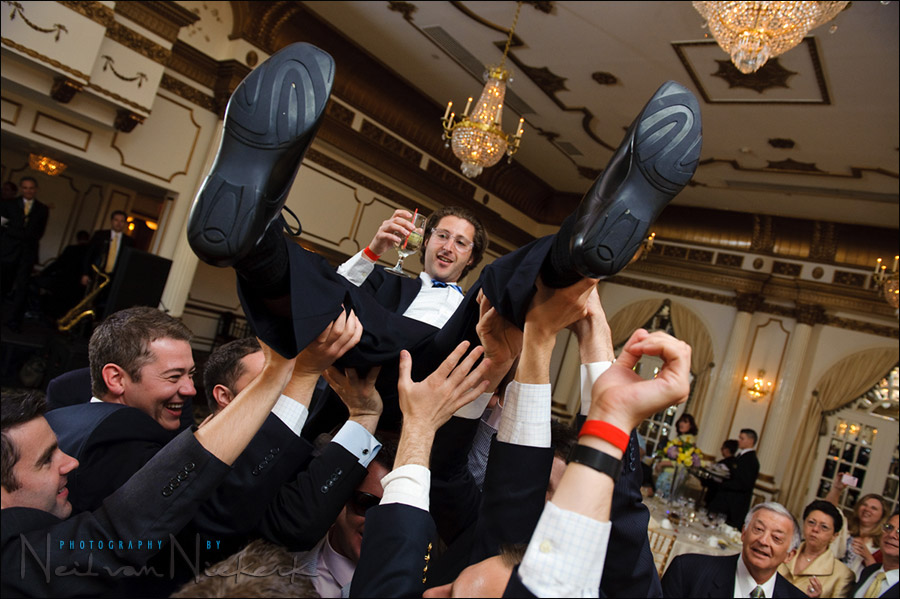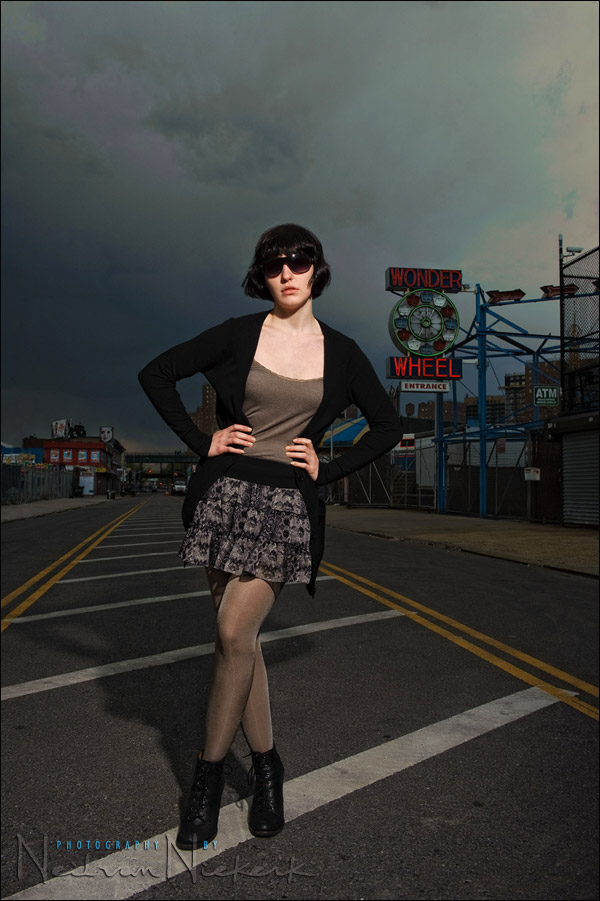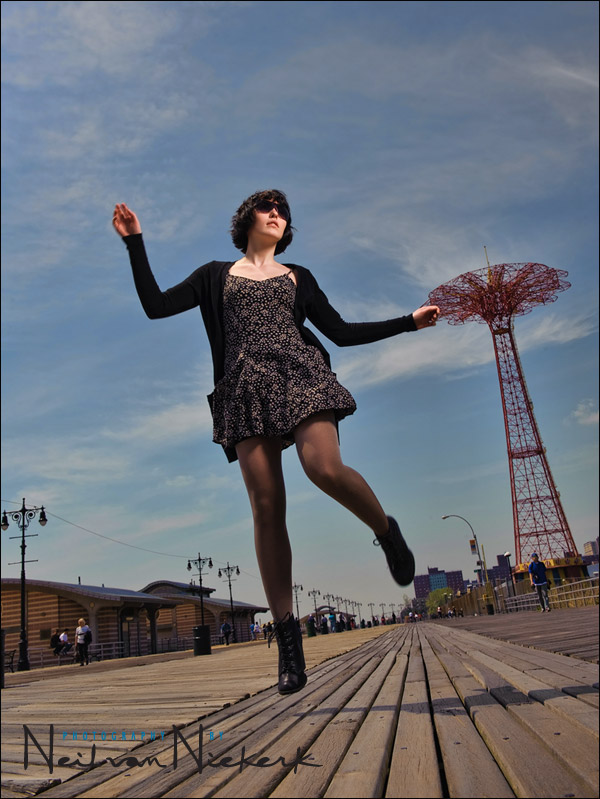off-camera flash – bringing sparkle on a rainy day
using off-camera flash to give more snap to photos
Scheduling an on-location photo session, we are always left at the mercy of the weather. This Sunday the threat of rain turned into a real downpour just before the photo session with a couple, Jen & Chris, whose wedding I am photographing later on in 2011. During phone conversation while driving in, we agreed to just go ahead and work under the overhangs of various buildings if it should rain. When we started, it was still raining so we moved to certain spots where we were shielded from the rain. I could shoot towards the building Read more inside...What if there is nothing to bounce your flash off?
What do you do when you can't bounce your flash?
A question that I'm often asked in emails or on this site or in person is, "What if there is nothing to bounce your flash off?" Sometimes the question seems to be directed as a challenge, but mostly I think photographers are hoping for a great solution that may have evaded them. Maybe, just maybe there might be a technique that could help when faced with super-high ceilings and wooden walls. Or, as in this photo above, when you encounter a venue with red ceilings and walls. This would be a tough color cast to fix in Read more inside...review: Lastolite Ezybox 24×24 softbox
review: Lastolite Ezybox 24x24 softbox
Softboxes used on location shoots, need to be easy and quick to set up. Ideally they should also be compact. Several photographers have recommended I check out the Lastolite Ezybox. So I took the plunge, and got the Lastolite EZYBOX 24×24" softbox (affiliate). Lastolite has a range of other Softboxes as well. All just as easy to use, with the Lastolite-specific way of expanding and collapsing. There's a specific way you twist it to collapse it. It's all in the wrists. The speedring simply clips into Read more inside...First curtain sync -vs- Rear curtain sync
First curtain vs Rear (2nd) curtain flash sync
A topic that has been briefly discussed on the Tangents blog before, is that of first curtain flash sync vs second curtain flash sync. First curtain sync is also often called front curtain sync; and rear curtain sync is often called second curtain sync. (This is also covered in my book on flash photography). Since it is an important topic in flash photography, let's look at what this entails and the difference between the two ways we can sync our flash .. and why would the one way would be preferable over the other. To help us Read more inside...photographic composition in editing
composition in photography
In composing an image, it isn't just a matter of placing your subject somewhere in the frame. This is true for whether you go by the rigid restrictions of the Rule of Thirds, or whether you like a more central composition .. or a composition with a lot of negative space .. or whether composition is more in the way you instinctively react to the scene and subject in front of you. Equally as important as where you place your subject, is what you include and what you exclude in the frame. With photographic composition you have to look at the edges of your Read more inside...Mixing TTL flash with manual flash – wedding receptions
Mixing TTL flash with manual flash - wedding receptions
A common technique used in photographing wedding receptions, is to use additional lighting to lift the general light levels in large reception rooms. The additional lights can be wirelessly controlled TTL flash - but more often the additional lighting would be manual flash. Then you can use an on-camera flash, either in manual or in TTL. My preference when working like this, is for my on-camera flash to be used in TTL mode, and the additional light(s) to be in manual. In the photograph above, taken during a wedding Read more inside...background exposure and flash
flash photography - background exposure and flash
When I saw this dramatic sky with the approaching storm during our recent shoot at Coney Island, I knew I wanted to photograph our model against it. By the time I actually started taking photos, the raindrops were already spattering around us. So there was little time to work. I knew I wanted a brooding sky. Now, depending on how I chose my exposure, I could've had a much the sky appear much brighter, or just a little bit brighter than shown here. There's a whole range of possibilities in how I could've exposed for my Read more inside...it was one of those days ..
You know how some days you have the feeling that the day is just filled with all kinds of possibilities? Today was one of those days. I got to meet and hang out with someone's whose work I admire - Frank Doorhof. Frank is a fashion photographer from The Netherlands who is highly regarded for his lighting skills. He is currently visiting New York to present workshops on photography lighting. (In fact, there are still a few spots open for the Monday workshop.) A mutual friend, Richard Verlaque, arranged for us to meet, with the intention of us also doing a photo shoot, and possibly exploring Read more inside...
Canon E-TTL flash settings – Average vs Evaluative flash metering
Canon E-TTL flash settings - Average vs Evaluative flash metering
With TTL flash, (or E-TTL, as Canon call their specific flavor), the camera and speedlight working together according to various algorithms to control the flash exposure. The E-TTL flash exposure will therefore depend on various factors - the tonality of the subject and scene; the brightness of the scene; and how the camera interprets the sections of the metering pattern. Other factors quite possibly also includes data from the lens. How these factors inter-relate, we can only make educated guesses; and many Read more inside...- « Previous Page
- 1
- …
- 20
- 21
- 22
- 23
- 24
- …
- 32
- Next Page »
